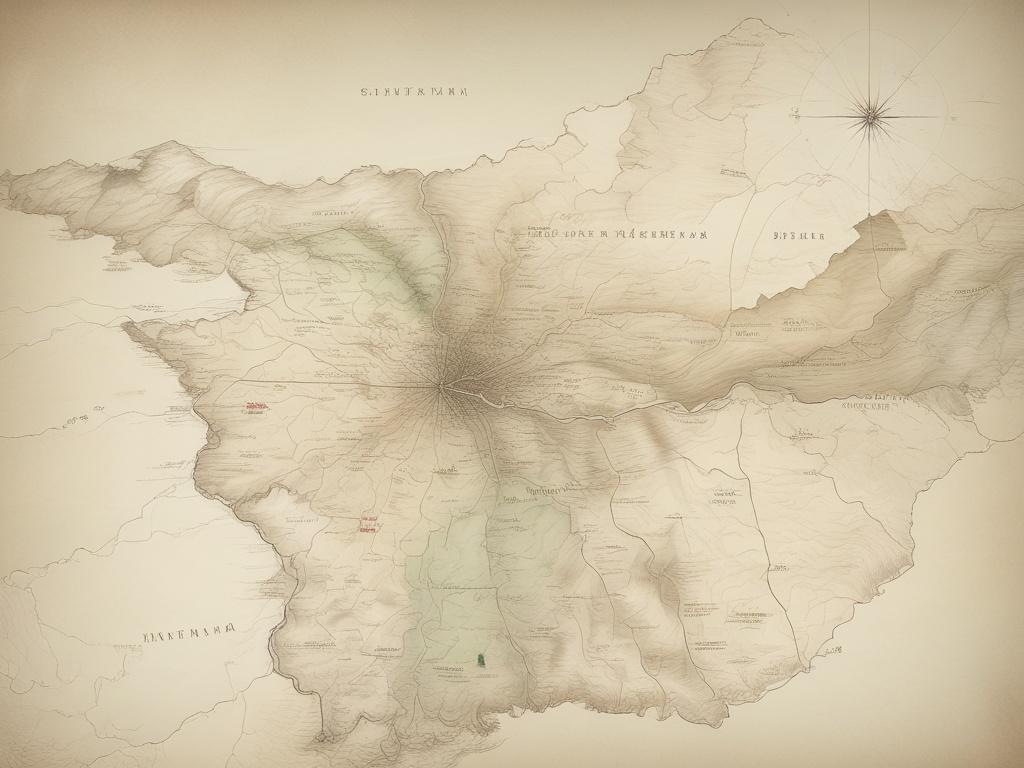

Southern Mongolia boasts a rich and complex history that reflects the diverse tapestry of cultures and traditions that have flourished in this unique region. Nestled between the vast Gobi Desert and the rolling steppes, Southern Mongolia has been a crossroads for nomadic tribes, traders, and empires for centuries. As we explore the rich and complex history of Southern Mongolia, we will uncover its cultural heritage and the myriad influences that have shaped its identity over time. From the ancient nomadic lifestyle to the Mongolian Empire's rise, the stories woven into the fabric of Southern Mongolia offer a captivating glimpse into a vibrant past.
Key milestones punctuate the historical journey of Southern Mongolia, each contributing to its significance in the broader context of Central Asian history and culture. From the enduring legacy of Genghis Khan to the challenges faced during modern geopolitical shifts, Southern Mongolia's narrative is both fascinating and impactful. By examining these pivotal moments and acknowledging the diverse cultural influences that have emerged over time, we gain a deeper understanding of Southern Mongolia's role in shaping not only its region but also its place in global history. Join us as we delve into this captivating exploration and appreciate the rich heritage that defines Southern Mongolia today.
Uncovering the cultural heritage of Southern Mongolia
Southern Mongolia boasts a vibrant tapestry of cultural heritage that reflects its diverse influences and rich traditions. From the nomadic lifestyle of the Mongolian people to the intricate art of traditional handicrafts, these elements paint a vivid picture of a region steeped in history. The region celebrates its heritage through various festivals, such as the Naadam Festival, where locals showcase their skills in horseback riding, archery, and wrestling. This festival not only highlights the physical prowess of the people but also fosters a deep sense of community and identity among them.
Moreover, Southern Mongolia's cultural landscape is characterized by its unique musical traditions, with throat singing and the use of traditional instruments like the morin khuur (horsehead fiddle) capturing the essence of the Mongolian spirit. The region is also home to stunning architecture, from the towering Buddhist monasteries to the rustic gers (traditional yurts) that dot the vast steppe. Each aspect of Southern Mongolia's cultural heritage tells a story, revealing the resilience and adaptability of its people. By exploring these rich traditions, visitors gain a deeper understanding of the region's significance and its ongoing influence on contemporary Mongolian culture.
Key milestones in the historical journey of Southern Mongolia
Southern Mongolia has undergone significant transformations throughout its history, marked by key milestones that shaped its societal and cultural landscape. The ascendance of nomadic tribes during the early medieval period laid the foundation for a vibrant culture centered around herding and trade. In the 13th century, Genghis Khan's unification of the Mongolian tribes catalyzed the expansion of the Mongol Empire, incorporating Southern Mongolia into a vast network of trade routes and cultural exchanges. This era not only introduced new ideas and innovations but also established Southern Mongolia as a crucial hub for commerce and communication between East and West.
In the following centuries, the region experienced various dynastic influences that left lasting imprints on its cultural fabric. The Yuan Dynasty (1271-1368) played a pivotal role as it connected Southern Mongolia more closely with Chinese civilization, fostering exchanges in art, science, and governance. Later, during the Qing Dynasty, Southern Mongolia witnessed increased migration and administrative control from China, leading to a blend of Mongolian and Han cultural elements. These milestones illustrate how Southern Mongolia's historical trajectory is interwoven with broader regional dynamics, highlighting its resilience and adaptability amid changing circumstances.
The significance of Southern Mongolia in a broader context
Southern Mongolia plays a crucial role as a bridge between diverse cultures, serving as a melting pot that intertwines Mongolian, Chinese, and various nomadic traditions. This region's historical significance extends beyond its geographic boundaries, impacting the cultural and economic exchanges across Central and East Asia. As traders, pilgrims, and travelers traversed the vast expanses of Southern Mongolia throughout history, they facilitated the introduction of new ideas, goods, and practices that enriched the cultural tapestry of the area. The legacy of the Silk Road still resonates, as it promoted trade in silk, spices, and other commodities, shaping the region into an essential hub of prosperity and cultural dialogue.
Moreover, Southern Mongolia's unique position influences its modern-day identity and political significance. The interplay between Mongolia and China, particularly in terms of governance and cultural preservation, illustrates the region's ongoing relevance in contemporary discussions about heritage and autonomy. As Southern Mongolia grapples with its cultural identity amidst external influences, it serves as a vital case study on the complexities of ethnicity, national borders, and cultural preservation. By exploring Southern Mongolia’s rich history, we can gain profound insights into the broader themes of resilience, cultural fusion, and the enduring nature of heritage in an ever-changing world.